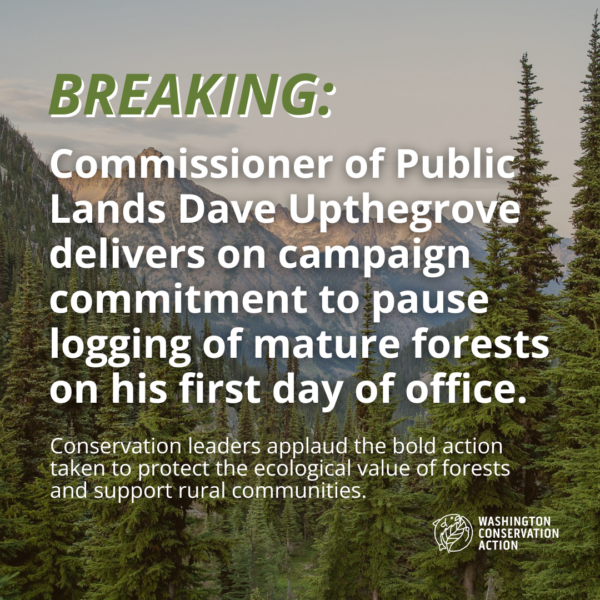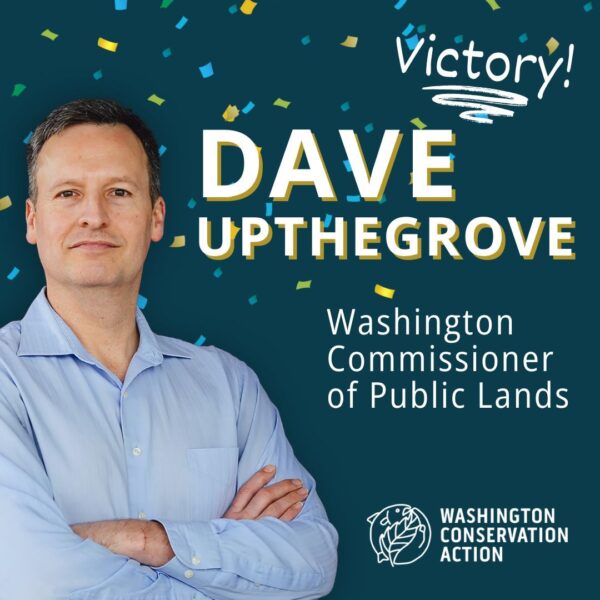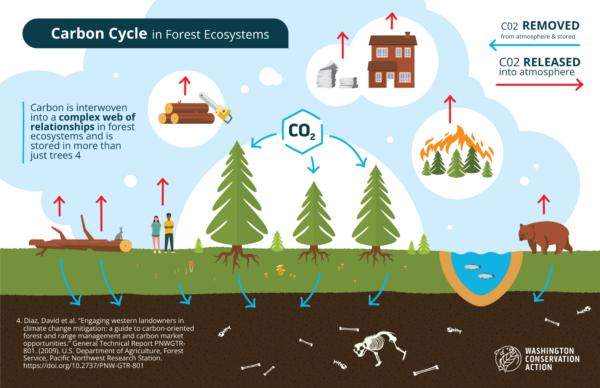Called Chimacum Ridge, this 850-acre forest was at risk of being clear-cut and carved up for new development by its industrial owners just a few years ago. Then, a team of partners including WEC, Jefferson Land Trust, Ecotrust Forest Management, the Trust for Public Land, Washington Association of Land Trusts, and the U.S. Navy stepped up to find innovative ways to permanently protect the land and keep it as a working forest.
These efforts came together in a big way this past legislative session. Because of WEC’s advocacy over the past two years, our work in the legislature secured $3.4 million from the state’s capital budget to buy a new conservation easement on the property. Not only will this conservation easement keep the land from being developed but it also provides the additional financial incentive needed to transition management from industrial practices to the highest standards of ecologically friendly forestry.
Already, that investment is paying off. Active forest management underway today looks very different than the large clear-cuts of past years. Rather than harvesting every tree within a given boundary, careful logging has thinned overstocked stands of diseased and suppressed trees leaving an overstory of mature Douglas fir. These practices will create enough new growing space for a range of new species to take hold. As this management continues over the years, trees will grow on longer rotations, and a once even-aged and single species plantation will be converted back to a diverse forest with multiple species and various age classes. All of these changes result in a healthier forest, making the land more resilient to the impacts of climate change and safeguarding public values like clean air, clean water, and wildlife habitat while continuing to supply local timber jobs far into the future.
In addition to these changes in management practices, plans are already underway by community leaders to ensure that working forest conservation is prioritized on Chimacum Ridge. This will allow community members to participate in management decisions and provide new opportunities for public access, recreation, and outdoor education. By developing a community forest on the property, we’ve ensured a healthier environment, local jobs, and a more resilient community for generations to come.
At WEC, we are proud to be driving this innovative project forward. Our work in Chimacum is a big step towards our goal of converting one million acres of industrially managed private forest to ecologically and sustainably managed forest. Just like our previous work developing the Nisqually Carbon Project, Chimacum Ridge shows how the right investments can build projects that protect rural communities and enhance our environment.



